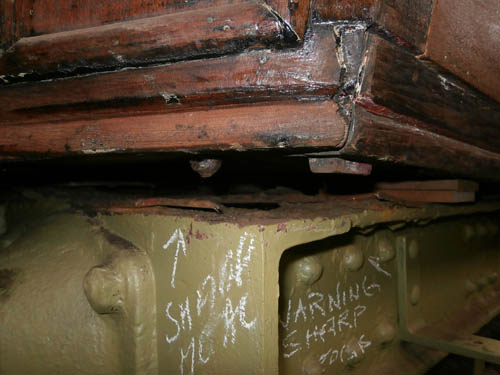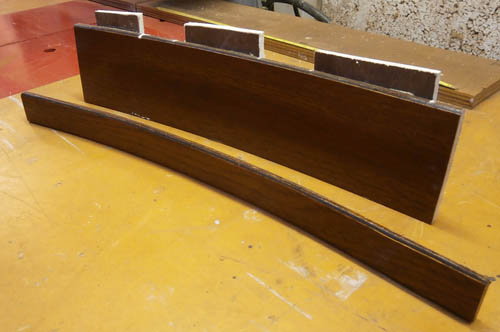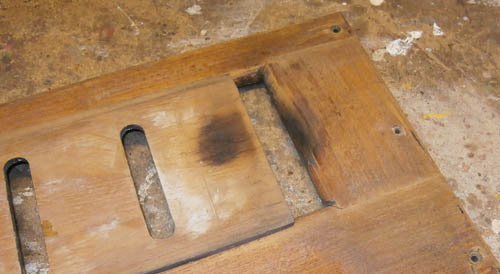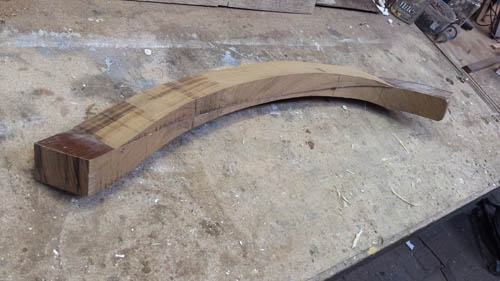
Summer / Autumn 2015
Al MacPhee continued with stripping and re-walling the east end toilet. The matchboarding which forms the lower half of the walls proved difficult to scrape and sand as the staining had sunk in very deeply over the years. Progress on the toilet was then halted due to the body lift.

After what seemed like months of banging, hammering, and other pneumatic noise, the body at last started to rise from the chassis. You can probably see in the above photograph the main reason for the lift - a great deal of corrosion at the chassis ends, especially the plate which goes across the top of the chassis under the gangway.

At both ends of the corridor, the vestibule ends were bereft of panelling - bereft of framing
as well when we started! Don made up curved pieces of horizontally grained panelling for the top, waist and skirting
pieces which needed to go in place before the vertical matchboarding could be fixed in between.
After staining and varnishing the curved pieces, these were trimmed to size ready for glueing in place.

As the coach was barriered "Out of Bounds" to allow the lifting operation to be started,
we spent some considerable time stripping the three remaining external doors to rid them of the ghastly
pink undercoat which was applied many years ago at Falkirk. This paint was a real pain to strip off, but on the
other hand, did a great job of preserving the teak underneath.
While stripping one door, a nasty black mark at one end of the hit-and-miss ventilator panel
proved difficult to shift. It turned out that the mark was a burn, indeed quite a deep burn!
Guess we were lucky the whole coach didn't go up in flames all those years ago!

Some progress was made with the manufacture of the weird shaped cantrail mouldings which are required to "terminate" the roof at the ends between the central gangway and the side (londitudinal) cantrail mouldings. These were made from teak recovered from the school demolition in Helensburgh. The overall envelope of the mouldings was 33" x 7" x 4" - a truly massive piece of wood if the awkward three-dimensional moulding were made from a solid piece of teak, and 4 of these were required. However, by cunningly cutting out a "scoop" from one side of a piece of solid only 2" thick then glueing the removed piece on to the back of the original, a 3-dimensional shape was created using only half the material. Difficult to explain in words, but the photograph hopefully shows what was done.